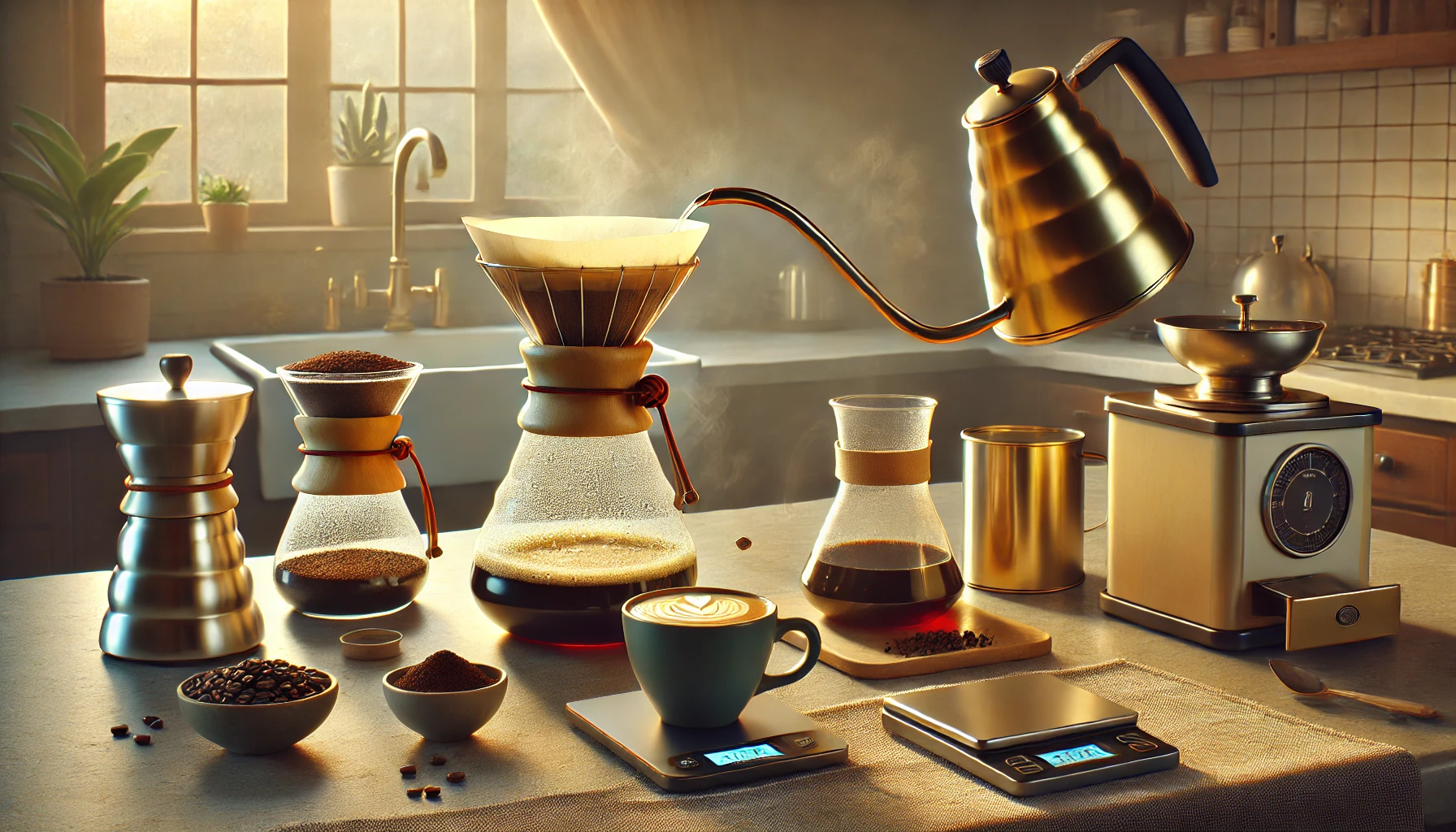Drip coffee is one of the most popular and accessible brewing methods around the world. Whether you’re new to brewing or just want to upgrade your morning ritual, learning how to make the perfect cup of drip coffee at home can completely transform your coffee experience.
With the right equipment, good beans, and a few essential techniques, you can enjoy a rich, aromatic, and balanced cup without ever leaving your kitchen.
What Is Drip Coffee?
Drip coffee—also known as filter coffee or pour-over (depending on the method)—involves pouring hot water over ground coffee, which then filters through a paper or metal mesh and drips into a carafe or cup below.
This method brings out clarity and subtle flavors in the coffee, making it perfect for those who appreciate nuanced tasting notes.
What You’ll Need
Here’s what you need to get started:
- Freshly ground coffee beans (medium grind)
- A drip coffee maker (automatic or manual pour-over like V60, Chemex, or Kalita Wave)
- Filter paper or reusable metal filter
- Hot water (preferably filtered)
- Digital scale (optional but recommended)
- Timer or stopwatch
- Kettle (a gooseneck kettle is ideal for manual pour-over)
Choosing the Right Coffee Beans
To make great drip coffee, start with high-quality beans. Look for:
- Freshly roasted beans (within 2–4 weeks of roast date)
- 100% Arabica for smoother, more nuanced flavor
- Single-origin if you want to explore specific regional profiles
- Roast level: Medium roast works best for drip brewing as it balances acidity and sweetness
Avoid using pre-ground coffee if possible. Grinding your beans right before brewing makes a huge difference in freshness and flavor.
Grind Size Matters
Grind size affects extraction, which determines how your coffee tastes. For drip coffee, aim for a medium grind—similar in texture to sea salt or sand.
Too fine = over-extracted (bitter)
Too coarse = under-extracted (sour or weak)
If you’re using a blade grinder, try to grind in short pulses and shake the grinder to get a more even grind. For better results, invest in a burr grinder.
Water Quality and Temperature
Coffee is 98% water, so quality matters. Use filtered water that’s free from chlorine and minerals that could affect the taste.
The ideal water temperature is between 90°C and 96°C (195°F to 205°F). Water that’s too hot can burn the coffee, and water that’s too cool won’t extract enough flavor.
If you don’t have a thermometer, bring the water to a boil and let it rest for 30 seconds before pouring.
Ideal Coffee-to-Water Ratio
A good starting point is the Golden Ratio:
- 1:15 to 1:17 coffee-to-water
- That means 1 gram of coffee for every 15–17 grams of water
Example: For a standard 12 oz (350 ml) cup of coffee, use about 22 grams of coffee and 350 grams (ml) of water.
Using a digital scale helps with consistency and makes a noticeable difference in flavor balance.
Step-by-Step: Brewing Manual Drip Coffee
Let’s walk through how to make a perfect manual pour-over using a V60 or Chemex.
1. Prep the Filter and Equipment
- Place your filter in the dripper and rinse it with hot water (this removes paper taste and warms the dripper).
- Discard the rinse water.
2. Add the Ground Coffee
- Place the dripper on your mug or carafe.
- Add your freshly ground coffee and gently shake to level the bed.
3. Bloom the Coffee
- Start your timer.
- Pour just enough hot water to wet all the grounds (about twice the coffee weight).
- Wait 30–45 seconds to let the coffee bloom. This releases CO₂ and improves extraction.
4. Continue Pouring in Circles
- Pour the rest of the water slowly in small circles, avoiding the edges of the filter.
- Try to pour in stages over the next 2–3 minutes, keeping the water level steady.
- The total brew time should be around 3.5 to 4 minutes.
5. Serve and Enjoy
- Once all the water has passed through, remove the dripper.
- Give your coffee a gentle swirl to mix, and enjoy!
Tips for Better Drip Coffee
- Use freshly ground beans every time
- Store your beans in an airtight container away from light and moisture
- Keep your equipment clean—old coffee oils can affect taste
- Experiment with ratios and timing to match your taste
- Use a gooseneck kettle for better control during manual pours
- Preheat your mug to keep coffee warmer longer
Common Mistakes to Avoid
- Using stale or pre-ground coffee
- Ignoring grind size
- Brewing with bad water
- Not rinsing the paper filter
- Pouring water too quickly or unevenly
Remember: coffee brewing is both science and art. It takes a little practice, but once you dial in your method, drip coffee can be one of the most rewarding ways to start your day.
Final Thoughts: A Ritual Worth Perfecting
Brewing drip coffee at home isn’t just about convenience—it’s a daily ritual that brings comfort, focus, and even creativity. With a few simple tools and a bit of attention to detail, you can consistently brew delicious coffee that rivals your favorite café.
So next time you reach for that cup, take a moment to appreciate the care behind it—and enjoy every sip.
